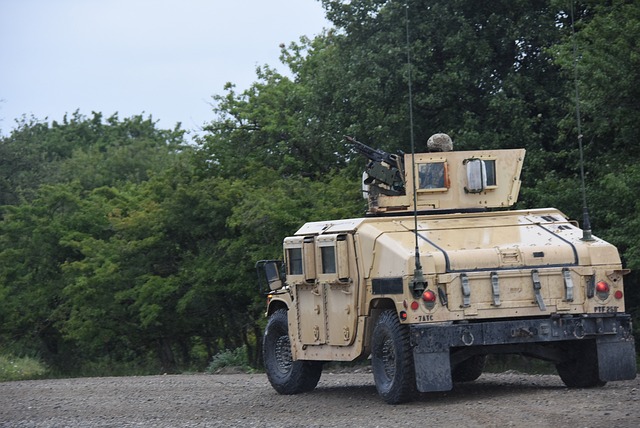
The US Army National Guard Flag is a significant emblem representing the branch's dual commitment to state and federal duties, its integral role in international military operations, peacekeeping missions, and humanitarian aid, and its active participation in homeland security and disaster response. This flag's presence worldwide symbolizes the unity, resilience, and collective strength of the U.S. Army National Guard within global defense strategy. It embodies a rich heritage that traces back to the American Revolution and reflects the branch's adaptive role, with its design capturing its dual mission of state sovereignty and federal service. The flag's imagery and color scheme are emblems of historical significance and daily reminders of the National Guard's contributions, serving as a testament to their enduring legacy and collaborative spirit with active-duty forces. It is a symbol of commitment, unity, and partnership that enhances cooperation and operational effectiveness in international military operations and joint training exercises, promoting interoperability, standardizing practices, and aligning personnel with shared goals. The consistent use of this flag across various training grounds underscores its importance in improving the cohesion and effectiveness of these efforts.
The US Army National Guard Flag, a symbol of enduring service and local commitment, unfurls at military installations across the globe. This article delves into the multifaceted significance of this emblem, exploring its historical evolution, the deep-seated symbolism it embodies, and its pivotal role in fostering community engagement. Additionally, we will examine the flag’s influence on international operations and training exercises, highlighting how this iconic banner bridges the gap between military readiness and civic presence. Join us as we pay homage to a flag that represents both the national guard’s rich heritage and its indispensable contribution to global security and understanding.
- The Significance of the US Army National Guard Flag in Global Military Bases
- Historical Evolution and Symbolism of the US Army National Guard Flag
- The Role of the US Army National Guard Flag in Community Engagement
- The Impact of the US Army National Guard Flag on International Operations and Training Exercises
The Significance of the US Army National Guard Flag in Global Military Bases

The US Army National Guard Flag holds a distinctive place within the array of flags that flutter at Army installations across the globe. It symbolizes the enduring commitment of the National Guard to defend and protect the United States, its people, and their interests both domestically and abroad. As a branch of the U.S. military with deep roots in American history, the National Guard represents a unique form of service that blends state and federal missions. This flag’s presence on global military bases serves as a tangible reminder of the National Guard’s critical role in joint operations and its contributions to international peacekeeping and humanitarian efforts. The flag’s visibility at these installations underscores the shared responsibility and dedication of National Guard personnel, who stand ready to answer the nation’s call wherever and whenever needed, upholding the values of service, loyalty, and readiness that are synonymous with the U.S. Army National Guard. It is a symbol of unity and resilience, reflecting the collective strength of this vital military component in the global defense strategy.
Historical Evolution and Symbolism of the US Army National Guard Flag

The US Army National Guard Flag, often referred to as the “National Guard Flag,” has a storied history and carries rich symbolism that underscores the dedication and service of its members. Originating from colonial militias that offered critical support during the American Revolution, the concept of state-level defense has evolved into the organized military force known today as the National Guard. Over the centuries, the flag’s design has been emblematic of this commitment to protect and serve, reflecting both the federal connection to the US Army and the individual states’ sovereignty. The flag features a shield at its center, flanked by an eagle holding arrows and an olive branch, signifying the readiness of the National Guard to defend or seek peace. Above the shield is a crown representing state authority, while the national emblem sits atop, symbolizing federal oversight. The field of the flag is divided into three parts—one for each branch of the military service: green for the Army, red for the Air Force, and blue for the Coast Guard, with the National Guard occupying a unique position as a joint force. This evolution and symbolism are not merely historical artifacts but are daily affirmations of the National Guard’s role in maintaining homeland security, supporting civil authorities during natural disasters, and serving alongside active-duty military personnel in overseas conflicts. The US Army National Guard Flag thus stands as a proud testament to the enduring legacy and adaptive nature of this vital component of America’s defense system, flown at Army installations worldwide and in the heart of local communities.
The Role of the US Army National Guard Flag in Community Engagement

The Impact of the US Army National Guard Flag on International Operations and Training Exercises

The presence of the US Army National Guard flag serves as a powerful symbol of commitment, unity, and partnership within international operations and training exercises. This emblem is not merely a marker of identity but a representation of the collective resolve and dedication of both active-duty service members and National Guardsmen. Its visibility at Army installations around the world underscores the integral role that the National Guard plays in global defense strategies, providing a familiar and unifying element amidst diverse military contingents. The flag’s presence during joint operations fosters mutual respect and understanding, enhancing collaboration and operational efficiency. It also serves as a tangible reminder of the shared values and objectives between nations, reinforcing the bonds forged through common defense efforts.
In training exercises, the US Army National Guard Flag is instrumental in promoting interoperability among military personnel from different countries. These exercises often involve complex scenarios that test the tactical proficiency and strategic acumen of participants. The flag’s consistent use across various training environments helps to standardize practices, ensuring that all personnel are aligned with the common goals set forth by the National Guard. This standardization not only improves the quality of training but also prepares forces for real-world scenarios where they must operate alongside allies and coalition partners, thereby enhancing the overall effectiveness of international military operations.
The US Army National Guard Flag, a symbol deeply rooted in American heritage and community service, holds a multifaceted role within the global military landscape. Its presence at Army installations worldwide signifies a commitment to national defense, as well as a steadfast partnership with local communities. From its historical origins to its contemporary significance, the flag’s evolution and symbolism have been instrumental in fostering unity and representing the collective spirit of the National Guard. This article has explored how this emblematic flag influences community engagement, enhances international operations, and plays an integral part in training exercises that uphold peacekeeping missions. As a unifying beacon, the US Army National Guard Flag stands as a testament to the resilience and dedication of its members, serving as both a rallying point for service members and a bridge between military and civilian populations across the globe.







